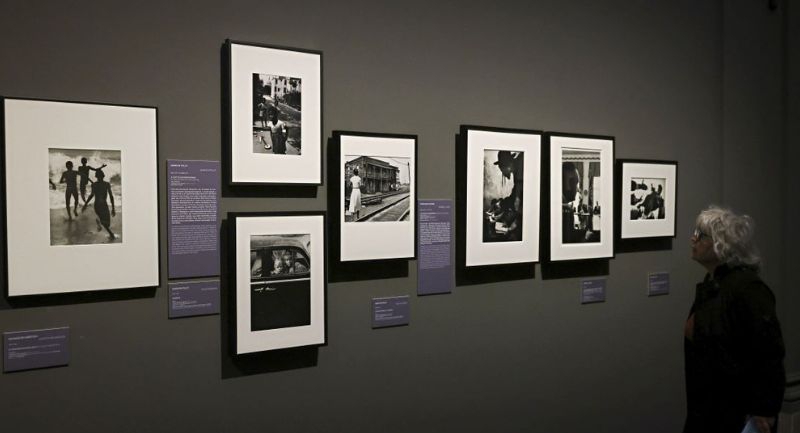
Best of Budapest & Hungary
Measure of Quality
Works by Hungarian Photographers Who Emigrated to the U.S.
An exhibition of the works of Hungarian-born photographers who emigrated to the United States and became famous there, including André Kertész, László Moholy-Nagy, Robert Capa and Martin Munkácsi, will be on display at the Museum of Fine Arts from this Saturday.
László Baán, Director General of the Museum of Fine Arts, said that the exhibition is the first comprehensive presentation of Hungarian American photographers. The majority of the material in the exhibition comes from the Virginia museum, but images from a total of seventeen American collections, including the Getty Museum in Los Angeles and the National Gallery of Art in Washington, D.C., have been included in the exhibition. Images have also been loaned by national institutions, including the Hungarian Museum of Photography, and private collectors.
The exhibition, which focuses on the period from the beginning of the First World War to 1989, features the work of 32 photographers, divided into eight sections, from the early days in Hungary, through the stations in Berlin and Paris, to the photographers who came to America.
One of the curators of the photo exhibition, Alex Nyerges, director of the Virginia Museum of Fine Arts, has been studying the oeuvre of Hungarian American photographers for a decade, and his research is being presented for the first time in Budapest.
"No other country's photographers have had as great an impact on 20th-century photography as the Hungarians. As Robert Capa once jokingly said, if you want to become a great photographer, it's not enough to be talented, you have to be Hungarian," Alex Nyerges said.
He added that "Hungarians who emigrated usually went to Berlin and Paris first, and then to New York, Chicago, Hollywood and other places in the US.” He noted that André Kertész, Robert Capa, László Moholy-Nagy, György Kepes are known to everyone, and this exhibition will also present the works of those who are unknown to the public.
The other curator, Péter Baki, director of the Hungarian Museum of Photography, said at the guided tour: the exhibition starts with a picture taken by André Kertész in Budapest in 1914. As he pointed out, Hungarian photography at the time was characterized by a transition between painterly influence and modernism. "Moholy-Nagy left Hungary after the Soviet Republic and took up a teaching post at the Bauhaus School in Weimar. It was he who formulated the idea that good photography requires light and light-sensitive raw materials, not a camera."
The third part of the exhibition focuses on Hungarians in Paris. Alex Nyerges pointed out that many women photographers, including Anna Varga, Ylla and Anna Barna, became prominent artists here in the 1920s and '30s. The section focusing on reportage photography features the war correspondent Robert Capa (his world-famous 1936 photograph The Death of a Militia Man is on display), and László Kondor, who took photographs during the Vietnam War and later returned to Hungary, where he still lives today.
The most extensive part of the exhibition, entitled Hungarians in New York, features a series of fifteen Polaroids by André Kertész, which depict his depression after the death of his wife. Also included here is Marcel Sternberger's portrait of President Roosevelt, which was added to the 10-cent coin after 1946. The Hungarians in Chicago section is dominated by photographs by György Kepes, based on the idea of the Bauhaus and reflecting modernity in the 1950s and 1960s.
Péter Baki said that among the Hungarian photographers who worked in Hollywood, Andor Dienes discovered Marilyn Monroe, while Martin Munkácsi was an innovator in fashion photography, taking models out of the studio and portraying them in motion, outdoors. The final image of the exhibition was by Nicholas Muray, who portrayed his love in his photo of Frida Kahlo in a blue dress.
Kertész, Moholy-Nagy, Capa... Hungarian Photographers in America (1914-1989) is on view from Saturday until August 25.




